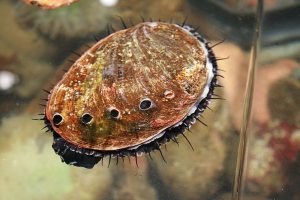
Earlier this year, scientists from Korea reported results from a transcriptome study of Pacific abalone. In this paper, the team used SMRT Sequencing to demonstrate that alternative splicing and gene expression have sex-specific signatures in these organisms.
“Alternative Splicing Profile and Sex-Preferential Gene Expression in the Female and Male Pacific Abalone Haliotis discus hannai” comes from lead authors Mi Ae Kim and Jae-Sung Rhee, senior author Young Chang Sohn, and collaborators. They focused on abalone, a marine gastropod, because of its importance to Korean aquaculture: the species they studied is estimated to represent about 10,000 metric tons of production each year.
As H. discus hannai has grown in economic importance, new genomics resources have become available, including a genetic linkage map and some RNA-seq data. This latest project was designed to glean more information about abalone to provide a clearer view of its biological function. Scientists chose to focus on sex-specific transcriptomes, using the Iso-Seq method to study gene content in male and female members of the species. They analyzed several tissue types — including gonads, muscle, gills, and more — and defined 15,110 protein-coding genes in females and 12,145 in males. Of those, 519 genes in female and 391 genes in male produced alternatively spliced transcripts.
To validate these findings, the team investigated expression profiles for six genes known to be sex-preferential in related organisms. Two of the three female-specific genes and all three male-specific genes were highly expressed in their respective samples. “Taken together, these studies strongly suggest the intactness of the sex-specific isoform DB of the Pacific abalone,” the authors write.
“The information obtained in this study represents the first significant contribution to sex-specific genomic resources, as well as isoform information,” the scientists conclude. “These data will provide an essential genomic reference that could be used for further diverse genetics- and physiology-based research using abalones.”
August 9, 2017 | General